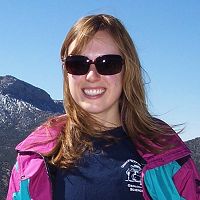Langston and Tucker, 2018
Developing and exploring a theory for the lateral erosion of bedrock channels for use in landscape evolution models.
Langston, AL and Tucker, GE (2018)
Earth Surface Dynamics 6: 1-27
-
Boulder, GRAD STUDENT
-
Boulder, INVESTIGATOR
Abstract
Understanding how a bedrock river erodes its banks laterally is a frontier in geomorphology. Theories for the vertical incision of bedrock channels are widely implemented in the current generation of landscape evolution models. However, in general existing models do not seek to implement the lateral migration of bedrock channel walls. This is problematic, as modeling geomorphic processes such as terrace formation and hillslope–channel coupling depends on the accurate simulation of valley widening. We have developed and implemented a theory for the lateral migration of bedrock channel walls in a catchment-scale landscape evolution model. Two model formulations are presented, one representing the slow process of widening a bedrock canyon and the other representing undercutting, slumping, and rapid downstream sediment transport that occurs in softer bedrock. Model experiments were run with a range of values for bedrock erodibility and tendency towards transport- or detachment-limited behavior and varying magnitudes of sediment flux and water discharge in order to determine the role that each plays in the development of wide bedrock valleys. The results show that this simple, physics-based theory for the lateral erosion of bedrock channels produces bedrock valleys that are many times wider than the grid discretization scale. This theory for the lateral erosion of bedrock channel walls and the numerical implementation of the theory in a catchment-scale landscape evolution model is a significant first step towards understanding the factors that control the rates and spatial extent of wide bedrock valleys.
Citation
Langston, AL and Tucker, GE (2018): Developing and exploring a theory for the lateral erosion of bedrock channels for use in landscape evolution models. Earth Surface Dynamics 6: 1-27. DOI: 10.5194/esurf-6-1-2018
Explore Further


